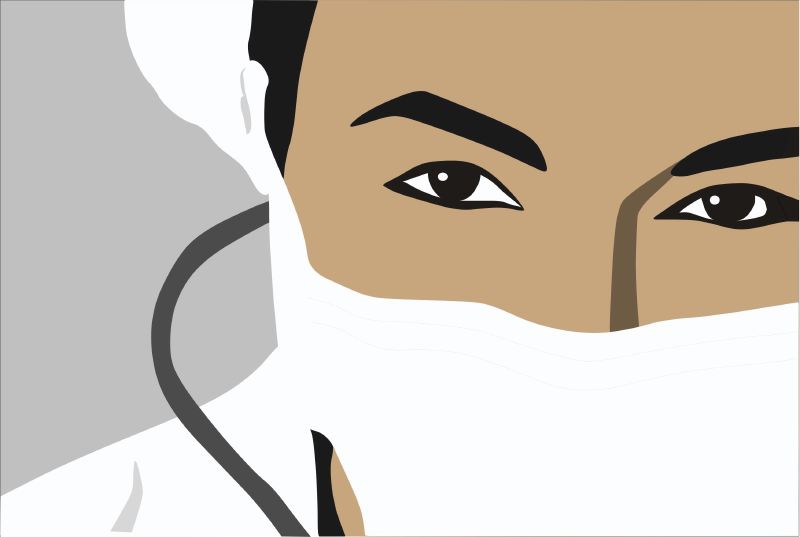
In this article, we explore the link between the burnout syndrome as it relates to doctors, and the impacts on their physical and mental health. Starting with the premise that burnout is an occupational stress-reated condition, it is unsurprising that the well-established chronic stress-related conditions that we see in our patients also manifest in ourselves and our colleagues. The links between physician burnout and illness have important implications for ourselves, our patients, and wider society.
First, let’s start with a definition. Now generally accepted as a chronic occupational stress-related disorder “that has not been successfully managed”, burnout is typically described by the WHO as including the triad of:
Prevalance rates in physicians (in the global West) are around 40%, with higher rates among women doctors, and an age peak in the 50s.
Physician burnout is associated with an increased risk of major medical errors. A recent meta-analysis involving more than 42,000 physicians found that physician burnout doubled the risk of adverse patient safety incidents and led to poorer overall quality of care and decreased patient satisfaction.
Burnout in doctors costs an estimated $5 billion (USD) per year due to reduced clinical productivity and increased physician turnover
In addition to worsened patient outcomes and satisfaction, and higher costs, physician burnout and illness may be affected by the long term stress effects of a toxic medical system.
Physician burnout is associated with increased risk of motor vehicle crashes and near-miss events, even after adjusting for fatigue.
A meta-analysis of 36 studies across different occupational groups (not physicians) found that burnout was a significant predictor of the following physical consequences:
• Hypercholesterolemia
• Type 2 diabetes
• Impaired glucose tolerance
• Coronary heart disease
• Hospitalization due to cardiovascular disorder
• Musculoskeletal pain
• Changes in pain experiences
• Prolonged fatigue
• Headaches
• Gastrointestinal issues
• Respiratory problems
• Severe injuries
• Mortality below the age of 45 years
• Increased alcohol, tobacco, and drug consumption.
In addition, markers of abnormal glucose metabolism are found in physicians with symptoms of burnout
Clearly, physician burnout and illness does not stop at the physical. The mental domain is strongly represented.
The same meta-analysis reported the psychological effects of burnout as:
Concerningly, physician burnout is associated with physician impairment more broadly, including a 25% increased odds of alcohol abuse/dependence, and a doubled risk of suicidal ideation.
Doctors are at increased risk of suicide compared to the general population, with the suicide rate amongst male physicians being 40% higher than other males in the population and the suicide rate amongst female physicians being 130% higher than other females in the population.
Undoubtedly, the 300-400 yearly physician suicides – we are losing one colleague a day by their own suffering – is underpinned by our poor mental wellbeing and barriers to reaching out for help.
Recent research has focused on the link between the “reward” for job performance and “work effort” (the effort required to meet job demands). An imbalance in the relationship between effort and reward (effort-reward imbalance, or ERI) has been linked to negative health outcomes.
Hypothalamic-pituitary axis dysregulation may be the mechanism by which job stress causes physician burnout and illness.
ERI been associated with increased risk of coronary events in multiple populations. In one primary care sample, those workers who reported either ERI or job strain had a statistically significant 16% increase in relative risk for symptomatic coronary heart disease, and those who reported both job strain and ERI had a 41% increase in risk for coronary events relative to those workers who reported neither risk factor.
Burnout in doctors costs an estimated $5 billion (USD) per year due to reduced clinical productivity and increased physician turnover (excluding medical litigation costs).
Job dissatisfaction, absenteeism, new disability pension, job demands, job resources and presenteeism are all linked to burnout across the professions, but doctors have some of the lowest absenteeism rates despite our high rates of distress markers.
Physician burnout and the resultant decreased productivity may exacerbate the previously predicted shortfall of 45,000 to 90,000 physicians in the United States by 2025.
Doctors’ professional groups like the American, Canadian, and British Medical Associations, have all highlighted the burning issue of burnout and illness, and they have developed local strategies to tackle this enormous and complex issue of relevance to us all.
Following on from the chronic stress hypothesis, it makes intuitive sense that successful stress reduction should help reduce the health impact of physician burnout.
These interventions have an evidence base for stress reduction:
This article has explored the links between physician burnout and illness – physical and mental (as if there were a difference!?!) – and why this is important for patient care, society, and crucially, ourselves and our loved ones.
We have listed a number of stress management strategies for physician burnout and illness that may normalize your cortisol and stress hormones, and in turn reduce the impact of work stress on your health.
In turn, a healthier you means a healther parent, partner, colleague, and physician.
